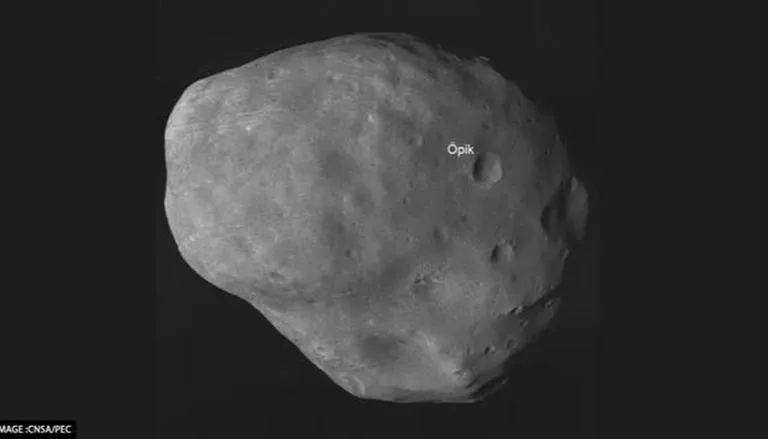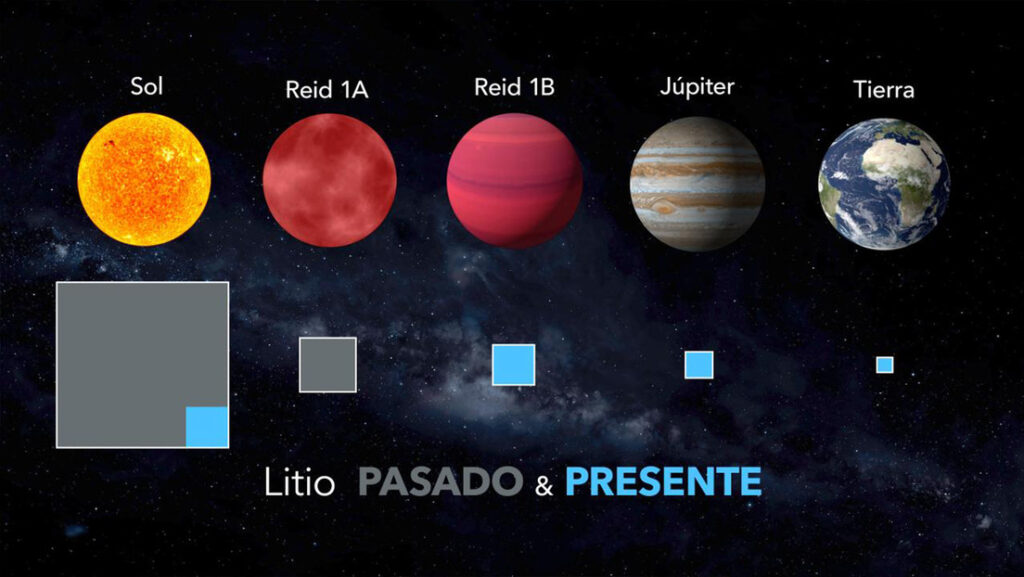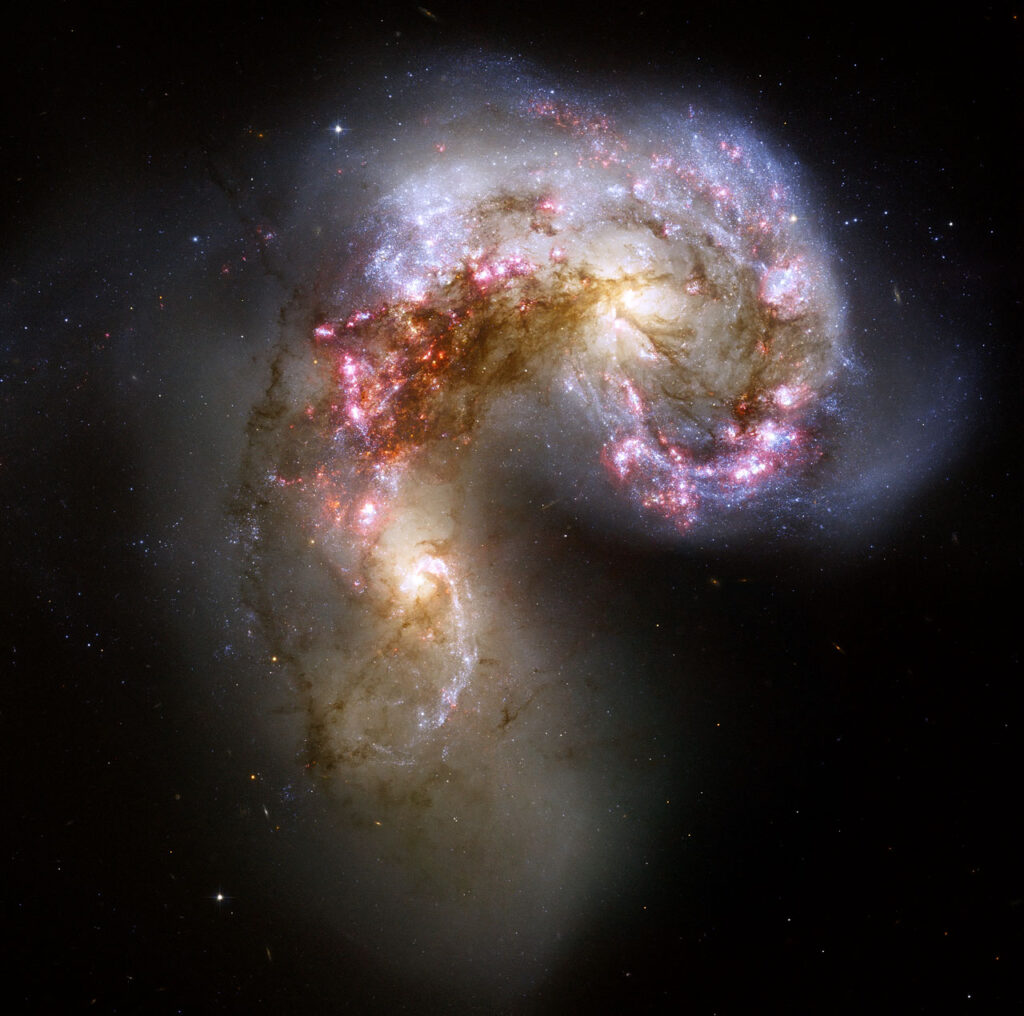China’s Mars orbiter was launched in 2020 as part of the Tianwen-1 mission which included a lander and a rover to explore the red planet’s surface.

China’s Mars Orbiter, which was launched under the Tianwen-1 mission, has beamed back a high-resolution image of Phobos, one of the red planet’s two Moons after Deimos. The mission was launched by the China National Space Administration (CNSA) on July 23, 2020, and comprised of an orbiter, a lander and a rover that were assigned specific tasks. The CNSA recently announced that its orbiter completed the primary objective, which was mapping the entire surface of Mars.
After transmitting a slew of new images, the orbiter has now sent Phobos’ picture that was captured from a distance of 5,100 kilometers. According to Space.com’s report, the picture was released by CNSA and the Planetary Exploration of China (PEC) to mark the second anniversary of Tianwen-1. The mission experts have marked out the Öpik Crater, on Phobos, which has been named after Estonian astronomer and astrophysicist Ernst Öpik.
Most recently, Phobos was in the headlines owing to the stunning eclipse captured by NASA’s Perseverance rover. The rover shot Phobos transiting the sun during the event that lasted for a total of 40 seconds.
China’s space ambitions
China’s space ambitions have prompted it to increase the expenditure on research and development. In 2021 alone, China spent a record US $441.3 billion, an amount which was 14% higher than its 2020 budget. According to the South China Morning Post, a majority of this amount is being spent on space exploration along with areas such as nuclear physics, quantum science and biological engineering.
Recently, an official from the CNSA announced Beijing’s plans for space exploration, which included beating the US and Europe in fetching samples from Mars. In addition to this, it has also planned planetary expeditions such as sending missions to Venus and launching telescopes to study the sun and hunt Earth-like exoplanets.
China is also looking to have a share in the low-Earth orbit (LEO) by establishing its Tiangong space station. At 11:52 am on July 24, it launched the second module named Wentian to space which docked with the Tianhe module about 15 hours after the launch. Weighing 23 tonnes, Wentian is heavier than any other module in Space and it will be used for science experiments. The space station’s construction will be completed when the third module Mengtian will be launched this October.
Recent Posts
- Astronomers detect first direct image of black hole expelling a powerful jet
- WhatsApp rolling out ‘reply with message’ feature within call notifications
- Multi-Device Pairing May Be Arriving for Apple Watch this Year
- Artificial Intelligence Discovers Hidden Giant, a Planet 5 Times Larger Than Jupiter
- Google CEO Sundar Pichai Talks Bard & The Future Of Search
Recent Comments

Astronomers detect first direct image of black hole expelling a powerful jet

Artificial Intelligence Discovers Hidden Giant, a Planet 5 Times Larger Than Jupiter

Scientists explain melting of Antarctic ice sheet dating back 9,000 years

An Unexpected Discovery: Hubble, ESA's Gaia Spot Double Quasar That Existed Over 10 Billion Years Ago

Astronomers detect first direct image of black hole expelling a powerful jet

WhatsApp rolling out ‘reply with message’ feature within call notifications

Multi-Device Pairing May Be Arriving for Apple Watch this Year


